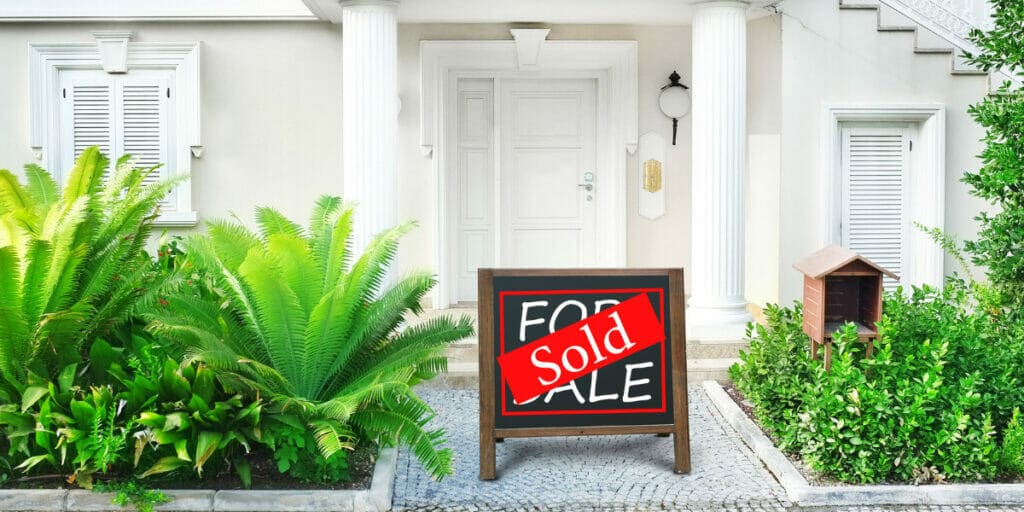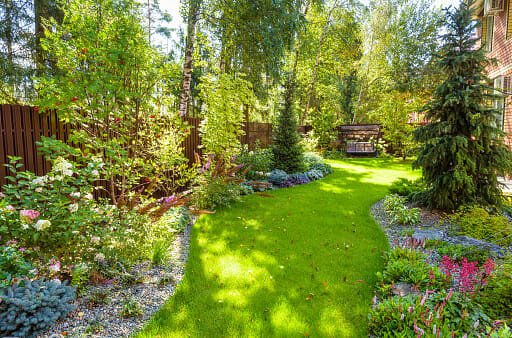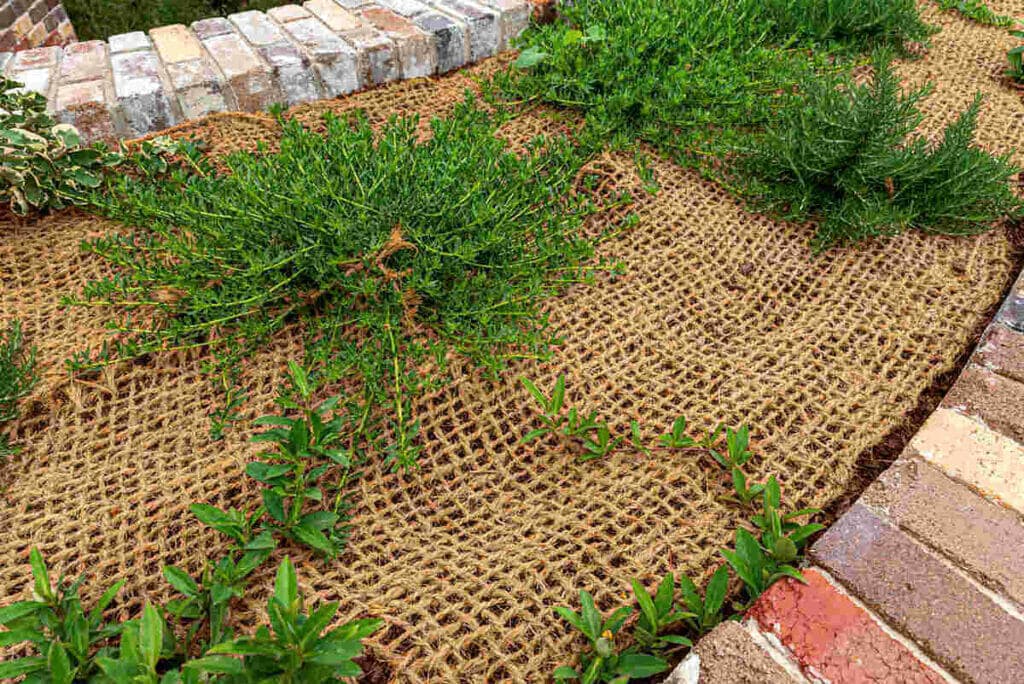The Impact of Landscape Design on Property Market Valuations
The connection between landscape design and property market prices is an increasingly important and intriguing subject of study in the real estate industry. In recent years, the role of outdoor spaces in shaping property values has gained prominence, as homeowners and buyers alike recognize the impact of well-designed landscapes on their quality of life.
This research seeks to delve deeper into this intricate relationship, aiming to uncover the multifaceted ways in which landscape design influences property market prices. Beyond the aesthetic appeal, factors such as the ecological sustainability, functionality, and adaptability of outdoor spaces play a pivotal role in property valuation. Additionally, the introduction of innovative landscaping elements, like green roofs and sustainable gardens, has the potential to redefine property market dynamics.
Understanding these connections is crucial for various stakeholders, including homeowners, real estate developers, and urban planners, as it can inform decision-making processes and investments. By exploring the intersection of landscape design and property market prices, this research endeavors to shed light on the often overlooked yet vital aspect of real estate valuation, ultimately contributing to more informed and profitable property market practices.
The Visual Impact of Landscape Design
Curb appeal is a crucial factor in real estate, as it forms the first impression potential buyers or renters have of a property. It encompasses the overall visual attractiveness of a property when viewed from the street. A well-maintained and thoughtfully designed landscape significantly contributes to curb appeal, making a property more inviting and memorable. A property with strong curb appeal often commands higher attention and may sell faster than one with a neglected exterior.
A well-designed landscape can transform a property’s visual appeal by adding aesthetic value and functionality. Elements like lush green lawns, colorful flower beds, well-placed trees, and decorative hardscapes create an inviting and harmonious environment. Properly designed landscapes also improve outdoor living spaces, making them more usable and enjoyable. Features such as patios, decks, or outdoor kitchens can enhance a property’s appeal, creating an attractive extension of the indoor living space.
Numerous studies and statistics highlight the positive impact of landscaping on property market prices. According to the National Association of Realtors, landscaping can increase a home’s value by up to 12%. Additionally, a study published in the Journal of Environmental Horticulture found that well-landscaped homes sell for an average of 7% more than similar homes without landscaping. These figures underscore the financial benefits of investing in landscape design, making it a smart choice for homeowners looking to improve their property’s overall visual impact and market value.
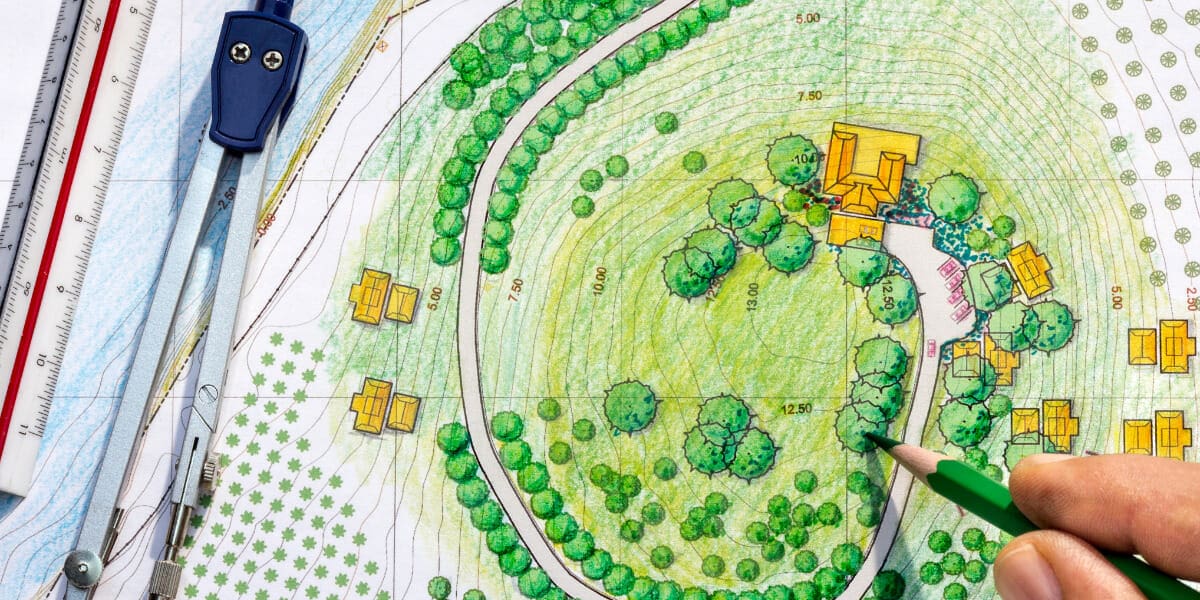
Landscape Design Trends
Current landscape design trends have a significant impact on the real estate market, as they shape the overall aesthetics and functionality of a property. One prominent trend is the emphasis on sustainable landscaping, which incorporates native plants, water-efficient irrigation systems, and eco-friendly materials. This eco-conscious approach not only appeals to environmentally conscious buyers but also reduces long-term maintenance costs.
Additionally, outdoor living spaces are gaining popularity, with homeowners seeking to create extensions of their indoor environments in their gardens. Features like outdoor kitchens, fire pits, and cozy seating areas are increasingly sought after, blurring the line between indoor and outdoor spaces.
These landscape design trends can substantially increase property value. Sustainable landscaping not only reduces water and maintenance costs but also aligns with the growing demand for eco-friendly homes. A well-executed outdoor living space extends the usable square footage of a property, creating more functional and enjoyable areas for relaxation and entertainment. This enhances the overall appeal and desirability of a home, often resulting in higher resale values.
Innovative landscape features that attract buyers include:
- Drought-resistant gardens with native plants, which require less water and maintenance.
- Smart irrigation systems that adjust watering schedules based on weather conditions and soil moisture levels.
- Vertical gardens or green walls that add a touch of nature in small spaces.
- Permeable paving materials that reduce runoff and flooding.
- Sustainable hardscape features like recycled glass countertops and reclaimed wood decking.
- Low-voltage outdoor lighting for both aesthetics and security.
- Pollinator gardens to support local wildlife and promote biodiversity.
- Multi-functional outdoor structures, such as pergolas and pavilions, for shade and outdoor gatherings.
Incorporating these trends into landscape design not only attracts potential buyers but also contributes to a property’s long-term sustainability and value in the competitive real estate market.
Functional Landscaping
Functional landscaping is a design approach that places a primary emphasis on the practicality and utility of outdoor spaces. It aims to create outdoor environments that not only enhance the aesthetic appeal of a property but also serve a specific purpose or function. This concept recognizes that a well-designed landscape should be more than just visually pleasing; it should be an extension of the living space that adds value to a property in various ways.
One key benefit of functional landscaping is its positive impact on a property’s marketability. When potential buyers or renters see a landscape that offers practical features, they often perceive the property as more valuable. For instance, the inclusion of an outdoor kitchen can turn a backyard into an entertainment hub, attracting those who love to host gatherings. A fire pit or outdoor fireplace can extend the usability of the space throughout the year, making it more appealing to a broader audience. Sustainable gardens, featuring drought-resistant plants and efficient irrigation systems, not only conserve resources but also reduce maintenance costs, adding to the property’s appeal.
Incorporating functional elements like these not only improves the property’s market value but also enhances the quality of life for its occupants. Functional landscaping blends beauty and purpose, creating outdoor spaces that are both aesthetically pleasing and highly usable, ultimately transforming a property into a more desirable and marketable asset.
Environmental Considerations
The Growing Importance of Eco-Friendly Landscaping:
In recent years, there has been a significant shift towards eco-friendly landscaping as people become increasingly aware of the environmental impact of traditional landscaping practices. Eco-friendly landscaping involves using sustainable, environmentally responsible techniques to design, install, and maintain outdoor spaces. This includes using native plants, minimizing water usage through efficient irrigation systems, reducing chemical pesticide and fertilizer use, and incorporating natural elements like rain gardens and permeable paving.
The importance of eco-friendly landscaping lies in its capacity to mitigate environmental issues such as water pollution, habitat destruction, and excessive resource consumption. It can also help combat climate change by sequestering carbon and reducing the urban heat island effect. Additionally, eco-friendly landscapes provide essential wildlife habitats and promote biodiversity.
Sustainable Landscaping Practices and Property Prices:
Sustainable landscaping practices can have a positive influence on property prices by enhancing a property’s curb appeal and overall desirability. Homebuyers increasingly value eco-conscious features and are willing to pay more for properties that incorporate sustainable landscaping elements. A well-designed sustainable landscape not only saves homeowners money through reduced water and maintenance costs but also adds long-term value to the property.
Green-certified homes with sustainable landscaping often command higher resale prices in the real estate market, making them a wise investment choice. Sustainable landscapes can also improve energy efficiency by providing shade and insulation, further boosting a property’s attractiveness.
Insights into Eco-Conscious Buyers and Their Preferences:
Eco-conscious buyers are a growing demographic in the real estate market. They prioritize properties with sustainable features, including eco-friendly landscaping. These buyers are often concerned about reducing their environmental footprint and seek homes that align with their values.
Eco-conscious buyers prefer landscapes with low water requirements, native plants that support local wildlife, and environmentally friendly materials such as reclaimed wood or recycled hardscape elements. They appreciate landscaping designs that prioritize water conservation, incorporate rainwater harvesting, and use organic fertilizers. Real estate professionals should consider these preferences when marketing properties to this environmentally aware segment of the market, as it can significantly impact the speed of a property’s sale and its final selling price.
Return on Investment (ROI) of Landscaping
Analyzing the potential Return on Investment (ROI) of landscaping projects involves considering various factors. Landscaping can significantly enhance a property’s value and curb appeal, translating into a higher ROI when selling or renting the property. Thoughtful design and maintenance can yield returns in multiple ways, including increased property value, reduced energy costs, and improved well-being for occupants.
Numerous studies have demonstrated the financial benefits of landscaping. Research by the National Association of Realtors has consistently shown that well-maintained landscapes can increase a property’s value by up to 12%. Furthermore, studies by the University of Washington reveal that landscaping can reduce heating and cooling costs by up to 20%, thus providing long-term financial savings.
To achieve cost-effective landscaping improvements with a high ROI, consider these tips:
- Native Plants: Choose native plants that are well-suited to your region’s climate, requiring less water and maintenance.
- Low-Maintenance Features: Opt for low-maintenance landscaping elements such as mulch, gravel, and drought-tolerant groundcovers to minimize upkeep costs.
- Sustainable Landscaping: Incorporate sustainable features like rain gardens or permeable paving to manage water runoff efficiently and reduce water bills.
- Professional Design: Consult with a landscape architect to create a cohesive and appealing design that maximizes your property’s potential.
- Regular Maintenance: Consistent upkeep ensures that your landscaping remains attractive and functional, preserving its ROI potential.
Landscaping is a smart investment that can yield significant returns through increased property value, energy savings, and enhanced well-being. By making informed choices and following cost-effective strategies, you can maximize the ROI of your landscaping projects.
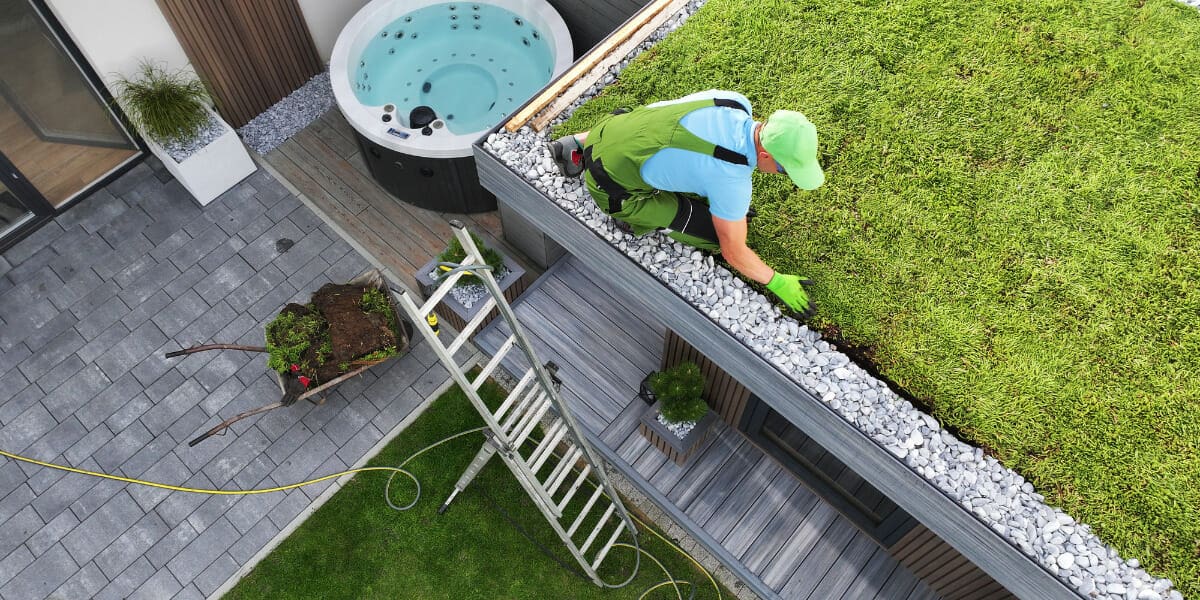
Professional Landscape Design vs. DIY
Hiring a professional landscape designer offers numerous advantages. Firstly, they bring expertise and creative vision to your project, ensuring that your outdoor space is not only aesthetically pleasing but also functional and sustainable. Their knowledge of local soil, climate, and plant species can lead to better plant selection and growth. Additionally, professionals can create detailed plans and timelines, helping you budget and manage resources effectively. They also have access to a network of reliable suppliers and contractors, simplifying the execution phase. Their experience in navigating permitting and zoning regulations can save you time and legal hassles. Furthermore, professional designers often bring innovative solutions to common landscaping challenges, enhancing the long-term value of your property.
DIY landscaping, while cost-effective, can come with potential pitfalls. One major issue is inexperience, which can lead to poor plant choices, improper installation, and costly mistakes. Maintaining a healthy landscape can also be challenging for novices, risking the survival of your plants. DIY projects may lack the professional touch, resulting in designs that lack cohesion or fail to maximize your space’s potential. Moreover, DIY landscaping can be time-consuming and physically demanding, making it impractical for those with busy schedules or limited physical capabilities.
Deciding between professional landscape design and DIY depends on your specific needs and capabilities. Seek professional help when dealing with complex projects, significant budget allocations, or when you lack landscaping knowledge. Also, consider hiring a designer for large-scale transformations or when aiming for a high-end, polished look. DIY is feasible for smaller projects, simple maintenance tasks, or if you possess gardening skills and have the time to invest. However, it’s essential to research, plan thoroughly, and be prepared for the challenges that come with tackling landscaping on your own. Balancing personal preferences, budget, and the scope of your project will help determine the best approach for your unique outdoor space.
Local Factors and Regional Variations
Location and regional trends play a pivotal role in shaping the connection between landscaping and property prices. Properties in urban areas often command higher prices if they have well-designed, low-maintenance landscapes due to the increased demand for aesthetically pleasing outdoor spaces in city living. In contrast, rural properties may prioritize functional landscapes, such as farms or large gardens, over purely ornamental ones.
Moreover, specific regional factors like proximity to natural attractions, parks, or bodies of water can significantly affect property values. Coastal homes, for instance, benefit from scenic ocean views and may feature coastal-themed landscaping elements, driving up their worth. Additionally, areas with a strong local landscaping culture tend to have higher property values as residents and buyers place greater importance on outdoor aesthetics.
Climate, geography, and cultural preferences are fundamental determinants of landscaping choices. In regions with harsh climates, such as deserts or alpine areas, landscaping may focus on drought-tolerant plants or cold-resistant foliage. Geography, including soil type and terrain, can influence whether a property leans towards a lush garden or a minimalist rock garden.
Cultural preferences also exert a significant influence. For example, in Japanese culture, Zen gardens are popular for their tranquility and minimalist design, while Mediterranean regions often feature olive trees and terracotta pots. In the southern United States, well-manicured lawns are common due to a cultural emphasis on spacious outdoor living.
Case Studies
Real-life case studies of properties that underwent substantial landscape improvements and subsequently experienced significant increases in market price demonstrate the tangible benefits of investing in landscaping. One such case is the transformation of a suburban home with a neglected backyard into a lush oasis. By adding a well-designed patio, vibrant flower beds, and a functional outdoor kitchen, the property not only became more visually appealing but also gained a valuable outdoor living space. As a result, the property’s market value increased by 20% within a year.
Another case involves a commercial property, a run-down shopping center with barren surroundings. After an extensive landscape renovation that incorporated water features, green spaces, and pedestrian-friendly walkways, the shopping center became a vibrant community hub. This revitalization led to a 30% rise in lease rates and increased foot traffic, boosting the property’s overall value.
The success of these landscape improvements can be attributed to several key factors. Firstly, aesthetic enhancements, such as adding lush vegetation, outdoor seating, and focal points like water features, created an inviting atmosphere that appealed to potential buyers and tenants. Secondly, increased functionality, like the addition of outdoor kitchens and recreational areas, made the properties more versatile and attractive. Thirdly, the incorporation of sustainable landscaping elements, such as drought-resistant plants and energy-efficient lighting, reduced maintenance costs and appealed to eco-conscious buyers.
Conclusion
The importance of landscaping in the property market cannot be overstated. It goes beyond mere aesthetics; it’s a key factor that can sway buyers or tenants in a competitive market. A beautifully landscaped property not only attracts more interest but can also command a higher price. Moreover, it contributes to the overall quality of life for residents, making it a valuable asset for both homeowners and property investors. In a world where first impressions matter, landscaping can be the difference between a property sitting on the market and one that sells quickly and at a premium.
We encourage readers to view landscape design as a strategic investment in their property’s future market price. By allocating resources to create and maintain appealing outdoor spaces, property owners can expect a substantial return on investment. It’s not just about immediate visual appeal; it’s about building long-term value. So, whether you’re a homeowner looking to enjoy a more pleasant living environment or an investor seeking to maximize property value, consider landscaping as a wise and profitable choice. As the saying goes, “You never get a second chance to make a first impression,” and in the property market, a well-landscaped property often makes the best first impression.

